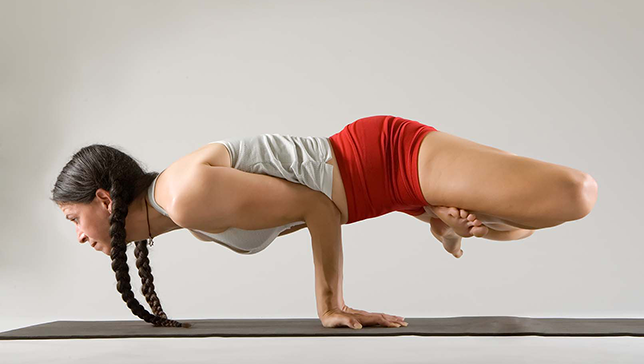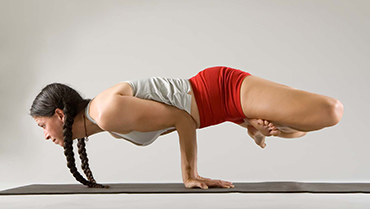Lotus Peacock Pose - Padma Mayurasana

Contents
Lotus Peacock Pose or Padma Mayurasana (pahd-mah my-yur-AHS-anna) is a combination of Peacock pose – an advanced arm-balancing pose – with the legs in Lotus position.
Balancing in Padma Mayurasana requires strength in the wrist, Forearms, shoulder, and power of core muscles. It helps in developing the musculoskeletal aspects of the practitioners along with balancing. Moreover, it ensures better functioning of the internal organs.
Pose Detail
- By Type: Arm Balance Yoga Poses, Balancing Yoga Poses, Hip Opening Yoga Poses, Strengthening Yoga Poses
- Body Position: Prone Yoga Poses
- By Benefit: Yoga Poses For Digestion, Yoga Poses For Stress Relief
Step-by-Step Instructions
Benefits and Contraindications
Strengthens your wrists and arms
Tones all organs in the abdomen.
Improves digestion and removes constipation.
Removes enlargement of spleen.
Works your back and legs
Calms the mind and redirects focus
Improves health of the pancreas. Good for all diabetic patients.
Ulcers
Pregnancy
Sciatica
Knee, back or neck injuries
High blood pressure
Hernia or abdominal pain
Photo poses in different angles

Modifications, Props and Tips
- Practitioners who are unable to lift their bodies properly in padma mayurasana can put blocks under their hands for the necessary elevation. It will assist in maintaining the posture.
- To keep your elbows together in Peacock Pose, use a yoga strap to bind them together by positioning it above your elbows. Your elbows may also be slightly apart in this pose, especially if you have broad shoulders and a large chest, or depending on how much flexibility you have through your shoulder girdle. Find what feels comfortable to you.
- In order to avoid the head in the condition of misplacement of the hands. Practitioners can place a bolster or blanket under their head, which could prevent injuries due to falling.
- Practitioners who are able to reach the final position, but unable to keep it for a few seconds, can take the help of some other person or chair support to rest upon.
Frequently Asked Questions
Variations
- Peacock Pose
- Lotus Peacock Pose With Legs Extended
- Wounded Peacock Pose
Top Preparatory Pose
- Tabletop Wrist Stretch Pose
- Four Limbed Staff Pose
- Lotus Pose
- Cow Face Pose
- Crow Pose
- Downward Facing Dog Pose
- Thunderbolt Pose